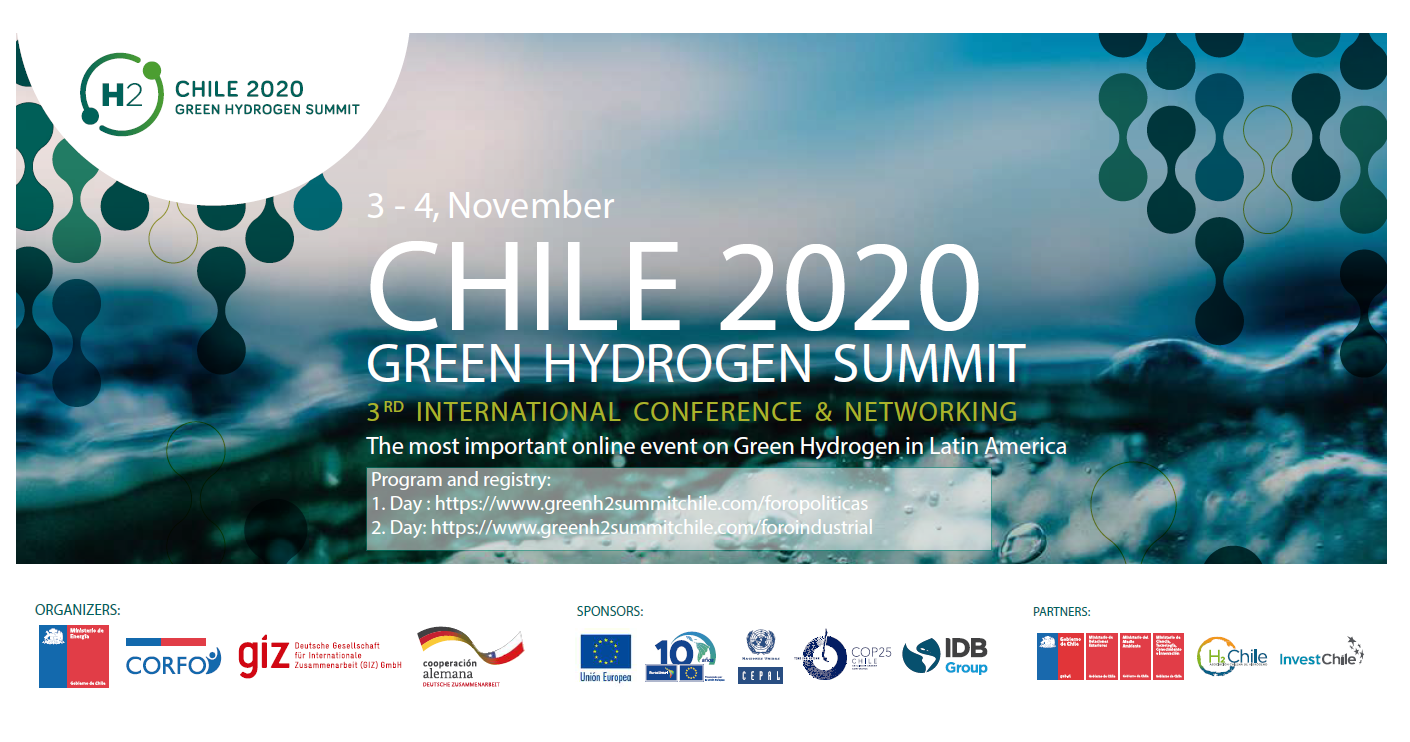Published on November 10, 2020
The pathways to net-zero
Sustainability in production and use is key. […] The production of hydrogen and PtX products needs to be sustainable in all social, economic and environmental dimensions.
Mr. Jochen Flasbarth, State Secretary, Ministry for the Environment, Nature Conservation and Nuclear Safety, Germany
Green hydrogen can play a central role in achieving the targets set out in the Paris Agreement. It will enable sectors which cannot directly use electricity generated by renewable energy resources such as the steel and chemical industry, as well as the aviation and shipping sector to decarbonise. A requirement to produce green hydrogen is the provision of large amounts of electricity from renewable resources. The production of green hydrogen must ensure that no additional CO2-emissions are generated.
Defining the pathways towards this goal was done at the Green Hydrogen Summit in Chile 2020. On 3-4 Nov representatives from politics, business and the industry from all over the world gathered to take part in the most important online event on green Hydrogen in Latin America. Panel discussions focusing on the political economics of hydrogen and the navigation through international cooperation and competition ensured that opinions could be exchanged, and common goals defined.
Thus the summit was the ideal format to pass on knowledge, innovation and passion regarding green hydrogen and is therefore a further attempt to ensure that the global temperature rise is kept below two degrees.
The focus was mainly on two main topics:
- First, the role of green hydrogen in the global energy transition and its relevance for the achievement of net-zero carbon in Chile, as well as in Latin America.
- Second, the role of green Hydrogen and Power to X in economic post COVID recovery with positive environmental and social impacts at local, regional and global levels.
Chile launched National Hydrogen Strategy
In this context, the Chilean energy minister Juan Carlos Jobet launched the Chilean National H2 strategy with three main objectives:
- Chile will have 5 GW on electrolysis capacity in development by 2025
- Chile will produce the worlds cheapest 100% green hydrogen by 2030
- Chile will be within the top three principal exporter of 100% green H2 by 2040
The importance of this issue and the close cooperation between Chile and Germany in tapping the potentials of green hydrogen and Power to X (PtX) was also evident through the participation of high-level political representatives such as President of the Republic of Chile, H.E. Mr Sebastián Piñera, Chileans energy minister Mr Juan Carlos Jobet, German State Secretary for Energy Mr Andreas Feicht, and the State Secretary of the Federal Ministry for the Environment, Nature Conservation and Nuclear Safety (BMU), Mr Jochen Flasbarth.
The excellent cooperation between Germany and Chile in the development of green hydrogen economy in Chile was mentioned in several occasions during the two days conference.
Already since 2014, the BMU is funding projects supporting Chile in exploiting the existing potential of renewable energy by developing project initiatives on green hydrogen. Together with the government, ministries and the private sector, these activities have created a momentum on green hydrogen and its derivatives to contribute not only to the decarbonisation of the Chilean economy, but also to create a green hydrogen/PtX export market. The first major commercial projects, driven by the private sector are currently under development.
The summit was organised in a cooperation with the GIZ project “Decarbonisation of the Chilean energy sector”.
Watch the recording of the two-day conference here: Chile 2020 – Green Hydrogen Summit recording
